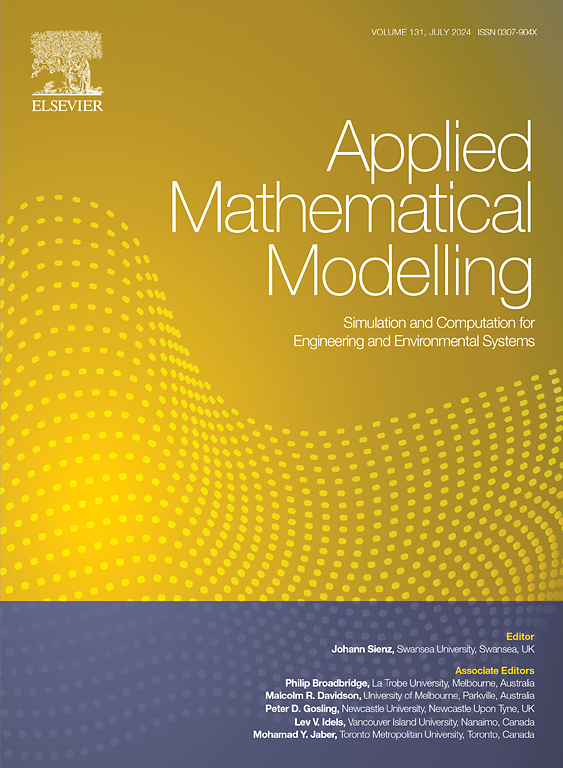三点弯曲作用下矩形多室梁弹塑性响应
IF 4.4
2区 工程技术
Q1 ENGINEERING, MULTIDISCIPLINARY
引用次数: 0
摘要
薄壁梁作为结构构件或吸能构件广泛应用于现代工业产品中。它们经常受到弯曲载荷并承受很大的变形。如何用理论方法准确预测其弹塑性弯曲响应仍然是一项具有挑战性的任务。在这项工作中,我们提出了一种理论方法来更精确地求解薄壁梁的弹塑性弯曲响应。首先对三室铝合金梁进行了试验试验,然后进行了数值分析。揭示了多室梁沿跨的非线性弯矩分布。推导了1 × m和2 × m单元的多单元截面弹塑性弯矩的理论表达式。在大变形三点弯曲模型的基础上,介绍了实现多单元梁三点弯曲响应的理论方法。给出了弯矩响应与力响应的转换关系。最后,通过不同截面形状的多单元梁的实验和数值结果验证了该方法的有效性。本文章由计算机程序翻译,如有差异,请以英文原文为准。
Elastic-plastic responses of rectangular multi-cell beams under three-point bending
Thin-walled beams are widely applied in modern industrial products as structural or energy-absorbing components. They are often subject to bending loads and undergo large deformation. How to predict their elastic-plastic bending responses accurately by theoretical methods is still a quite challenging task. In this work, we propose a theoretical method to give more accurate solution on the elastic-plastic bending responses of thin-walled beams. Experimental tests of triple-cell aluminum alloy beams are first carried out, and numerical analyses are then performed. The nonlinear bending moment distribution of multi-cell beams along the span is revealed. Theoretical expressions are derived for elastic-plastic bending moments of multi-cell sections with 1 × m and 2 × m cells. The theoretical method to achieve the three-point bending responses of the multi-cell beams is then introduced, based on a large deformation three-point bending model. The conversion relations between the bending moment response and the force response are also provided. Finally, the effectiveness of the proposed method is validated by experimental and numerical results of multi-cell beams with different sectional shapes.
求助全文
通过发布文献求助,成功后即可免费获取论文全文。
去求助
来源期刊

Applied Mathematical Modelling
数学-工程:综合
CiteScore
9.80
自引率
8.00%
发文量
508
审稿时长
43 days
期刊介绍:
Applied Mathematical Modelling focuses on research related to the mathematical modelling of engineering and environmental processes, manufacturing, and industrial systems. A significant emerging area of research activity involves multiphysics processes, and contributions in this area are particularly encouraged.
This influential publication covers a wide spectrum of subjects including heat transfer, fluid mechanics, CFD, and transport phenomena; solid mechanics and mechanics of metals; electromagnets and MHD; reliability modelling and system optimization; finite volume, finite element, and boundary element procedures; modelling of inventory, industrial, manufacturing and logistics systems for viable decision making; civil engineering systems and structures; mineral and energy resources; relevant software engineering issues associated with CAD and CAE; and materials and metallurgical engineering.
Applied Mathematical Modelling is primarily interested in papers developing increased insights into real-world problems through novel mathematical modelling, novel applications or a combination of these. Papers employing existing numerical techniques must demonstrate sufficient novelty in the solution of practical problems. Papers on fuzzy logic in decision-making or purely financial mathematics are normally not considered. Research on fractional differential equations, bifurcation, and numerical methods needs to include practical examples. Population dynamics must solve realistic scenarios. Papers in the area of logistics and business modelling should demonstrate meaningful managerial insight. Submissions with no real-world application will not be considered.
 求助内容:
求助内容: 应助结果提醒方式:
应助结果提醒方式:


